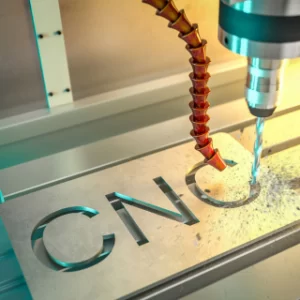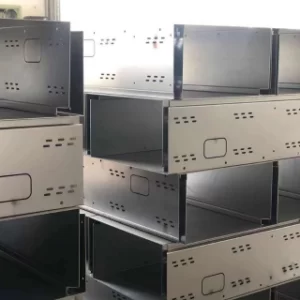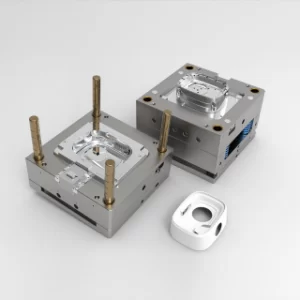Custom CNC Prototype Processing Experience: Peek Behind the Curtain
In the ever-evolving world of product development, CNC prototype processing plays a pivotal role. It allows designers and engineers to transform their ideas into tangible prototypes, helping them test, refine, and perfect their designs.
Insight Prototype Co., Ltd is a leading CNC prototype processing service provider, and they have extensive experience in helping clients overcome various challenges in the CNC prototyping process. In this blog, we'll delve into the challenges faced during CNC prototype processing and provide ten essential tips to optimize your experience.
Understanding the CNC Prototype Processing Journey
Before we delve into the challenges and solutions, let's understand the CNC prototype processing journey. It typically involves the following stages:
1. Design and CAD Modeling: The process begins with designing the 3D model of the prototype using Computer-Aided Design (CAD) software.
2. Material Selection: Choosing the right material for your prototype is crucial. Factors like strength, durability, and cost need to be considered.
3. CNC Programming: The 3D CAD model is then converted into a set of instructions for the CNC machine to follow. This is known as CNC programming.
4. CNC Machining: The CNC machine carves the prototype out of the chosen material with high precision.
5. Quality Control: Once the prototype is complete, it undergoes a thorough quality control check to ensure it meets the design specifications.
6. Testing and Feedback: The prototype is tested to evaluate its performance and functionality. Any necessary changes are made.
7. Refinement and Production: Based on the feedback and test results, the design is refined, and the final product is produced using the same CNC processing.
Now, let's address the challenges faced during this process.

Challenges in CNC Prototype Processing
1. Material Selection: Choosing the right material is a critical decision. It should match the intended use of the prototype and be cost-effective. Insight Prototype Co., Ltd offers material selection guidance to help clients make informed choices.
2. Complex Designs: Some prototypes require intricate and complex designs, which can be challenging to machine accurately. Precision is key to achieving the desired results.
3. Tight Tolerances: Meeting tight tolerances and ensuring all dimensions are within acceptable limits can be challenging, especially when working with complex geometries.
4. Machine Setup and Calibration: CNC machines need to be set up and calibrated correctly for each job. Any error in this phase can lead to inaccuracies in the final product.
5. Quality Control: Ensuring the quality of the prototype is essential. Defects can lead to wasted time and resources. Proper quality control measures are crucial.
6. Material Waste: Inefficient material use can result in higher costs and environmental concerns. Minimizing material waste is a priority in CNC prototype processing.
7. Lead Times: Meeting project timelines is often a challenge. Delays in any phase of the process can cause significant setbacks.
8. Cost Management: Staying within budget is a constant challenge. It's important to optimize the process to minimize costs.
9. Prototyping Iterations: Multiple iterations may be required to achieve the desired results. Managing these iterations efficiently is crucial.
10. Communication and Collaboration: Effective communication and collaboration between design teams and CNC operators are essential for a successful CNC prototype processing experience.
10 Essential Tips for Optimizing Your CNC Prototype Processing Experience
Now that we've identified the common challenges, let's explore ten essential tips to optimize your CNC prototype processing experience with the help of Insight Prototype Co., Ltd
1. Early Material Selection: Begin by selecting the right material for your project. Consult with material experts who can recommend the best options based on your project's needs.
2. Design for Manufacturability: Design with the CNC process in mind. Avoid overly complex geometries that can lead to machining difficulties.
3. Tolerance Consideration: Be realistic with tolerances. Consult with the CNC experts to set achievable tolerances based on your design.
4. Machine Calibration: Ensure that the CNC machine is calibrated correctly. Work closely with the CNC operators to eliminate any setup errors.
5. Quality Control Protocols: Establish a robust quality control process. Regularly inspect and measure prototypes to identify and address any defects early on.
6. Material Efficiency: Optimize your design to reduce material waste. Design parts that minimize material removal during CNC machining.
7. Project Scheduling: Set realistic project timelines and allow buffer time for unforeseen delays. Effective project management is key to staying on track.
8. Cost Estimation and Tracking: Develop a detailed cost estimation and tracking system to manage your budget effectively.
9. Prototyping Iterations: Plan for multiple iterations in your project timeline. This ensures that design improvements can be incorporated without derailing the schedule.
10. Communication and Collaboration: Foster open and transparent communication between your design team and the CNC operators. Regular updates and feedback sharing are crucial.
Mistakes to Avoid in Your CNC Prototype Processing Experience Journey
Mistake #1: Neglecting Design Specifications
In the world of CNC prototype processing, precision is key. Many people make the mistake of neglecting design specifications or providing incomplete information to the supplier. This can lead to misunderstandings, delays, and costly rework. To avoid this mistake, it's crucial to have a clear and detailed design plan. Discuss your project requirements with your CNC prototype processing supplier, like Insight Prototype, to ensure they have a complete understanding of your expectations.
Mistake #2: Ignoring Material Selection
Selecting the right material is a crucial decision in CNC prototype processing. Choosing the wrong material can affect the functionality, durability, and cost of your prototype. Some materials may be more suitable for specific applications than others. Work closely with your supplier to determine the most appropriate materials for your project. Insight Prototype offers a wide range of material options to meet your specific needs.
Mistake #3: Rushing the Prototype Process
Rushing the prototype process is a common error that can lead to subpar results. To create a high-quality CNC prototype, time and attention to detail are necessary. When working with a supplier like Insight Prototype, it's essential to understand that quality takes time. Set realistic timelines and allow for proper testing and adjustments.
Mistake #4: Neglecting Communication
Effective communication is the cornerstone of a successful CNC prototype processing experience. Some individuals make the mistake of assuming that once the project is underway, they can sit back and wait for the finished prototype. However, maintaining regular and open communication with your supplier is crucial. Discuss progress, ask questions, and provide feedback to ensure your project stays on track.
Conclusion
CNC prototype processing is a vital part of the product development journey. To achieve success, one must navigate the challenges with a proactive mindset and implement the provided tips. Insight Prototype Co., Ltd stands ready to assist clients in their CNC prototype processing journey, offering expertise and support at every step. By following the advice outlined in this blog, you can optimize your CNC prototype processing experience and turn your innovative ideas into reality.




